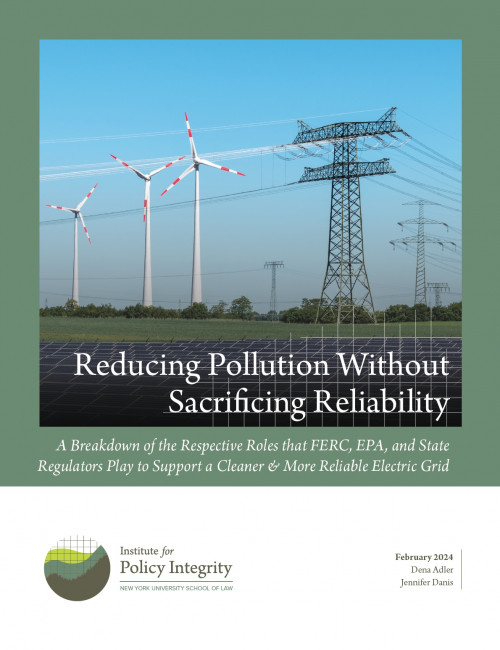The power sector is in the midst a profound transition. Myriad climate policies at nearly all levels of government, including the landmark 2022 Inflation Reduction Act (IRA), have incentivized the accelerated adoption of low-and zero-emission energy resources. These policies have sped along sectoral shifts already underway due to changing market conditions, plummeting renewables prices, and the replacement of aging coal-fired power plants with cheaper, more efficient resources. Meanwhile, the electric grid faces increasing vulnerability from climate change impacts that have become unavoidable, in addition to projected future increases in electricity demand. Both the structure and operation of our electric grid must shift to meet these challenges. This transition creates opportunities for policymakers to focus on increasing grid resilience and ensuring the availability of adequate clean resources to meet demand under future conditions.
The Federal Energy Regulatory Commission (FERC), regional transmission operators (RTOs/ISOs), state regulators, and utilities can leverage a variety of existing tools to plan for grid reliability throughout the energy transition. With appropriate coordination, grid planners and regulators can maintain grid reliability during and after implementation of important pollution-control policies, such as the Environmental Protection Agency’s (EPA) proposed greenhouse gas (GHG) limits for fossil fuel-fired power plants (Proposed 111 Rules).
Concerns that EPA’s Proposed 111 Rules, and other EPA pollution control rules, will significantly affect reliability appear grounded in assumptions that these rules function in a vacuum, but that is far from the case. A whole web of actors independently responsible for the electric grid are working to ensure the grid maintains (and increases) reliability given the myriad forces affecting it. Those entities’ work to reduce wider reliability challenges will include mitigating any marginal effects from EPA’s critically important rules. EPA has a long track record of reducing pollution without undermining the work of the entities for which reliability is their bread and butter.
Because multiple federal and state regulators must coordinate their efforts to ensure electric grid reliability, particularly during a period of major transition, it is important to understand what role each of them plays. This report reviews the respective roles of FERC, RTOs/ISOs, other transmission operators, state public utility commissions (PUCs), and state environmental regulators. EPA’s duty to reduce GHG emissions that endanger public health and FERC’s duty to steward grid reliability will require them to coordinate each other’s respective expertise as they work with RTOs/ISOs, state regulators, and utilities to implement EPA rules.

